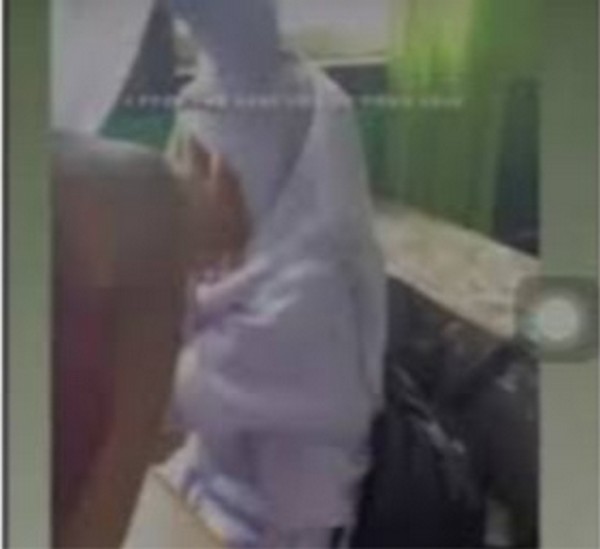Beed Milliya School Viral Video: Igniting Calls For Reforms In Rural Education

The Beed milliya school viral video, which circulated across social media platforms, ignited a nationwide outcry and brought attention to the dire state of student safety in India’s rural education system. This incident, involving the abusive behavior of a teacher towards Class 7 students, prompted calls for reforms and justice. As a leading platform for engaging and informative content, Jumy.vn delves into the background of Beed Milliya School, analyzes the impact of the viral video, explores the public outrage, and emphasizes the crucial need to protect the safety and rights of students in Indian schools.

I. Background of Beed Milliya School
1. Establishment and Student Demographics
The Beed Milliya School is a government-run middle school located in Maharashtra, India. It was established in 1985 with a mission to provide education to students from grades 6 to 8, primarily hailing from rural and disadvantaged communities. The school serves approximately 300 students, who rely on this institution for their academic development.
2. Infrastructural Deficiencies
Despite its long history, Beed Milliya School faces severe infrastructural deficiencies that hinder the quality of education it can provide. The school lacks adequate classrooms, resulting in overcrowded spaces that impede effective learning. Additionally, the absence of proper toilet facilities, electricity, and drinking water puts students at a disadvantage and compromises their overall well-being.
3. Challenges Faced by Students
Students studying at Beed Milliya School are confronted with numerous challenges that hinder their educational growth. The lack of essential amenities affects their health and hygiene, making it difficult for them to focus on their studies. Moreover, the school’s location in a rural area poses transportation difficulties for students, impacting their attendance and access to educational resources.
4. Impact on Academic Performance
The infrastructural deficiencies and overall difficult conditions faced by students at Beed Milliya School have a significant impact on their academic performance. Inadequate classrooms and resources limit the scope for interactive and engaging learning experiences. The lack of a conducive environment coupled with limited access to technology and educational materials further decreases students’ opportunities for academic growth.
5. Efforts Towards Improvement
Recognizing the challenges faced by the Beed Milliya School, various stakeholders, including the government and non-profit organizations, have initiated efforts to address the infrastructural deficiencies and improve the quality of education. These initiatives aim to provide better facilities, enhance teacher training programs, and establish collaborative partnerships to support the overall growth and development of students.

II. The Viral Video and its Impact
1. Video Goes Viral and Sparks Outrage
The Beed Milliya School viral video depicting the abusive behavior of teacher Rajan Verma towards Class 7 students gained widespread attention and sparked outrage across India. The video, initially shared on social media platforms, quickly went viral due to its shocking content. Viewers were appalled by the extreme physical violence and forced labor inflicted upon the young students, leading to a significant outcry for justice.
2. Public Outrage and Demands for Reforms
The viral video ignited public anger and highlighted the urgent need for reforms in India’s rural education system. People from all walks of life, including parents, teachers, activists, and lawmakers, expressed their outrage and demanded immediate action. The incident exposed not only the dire state of student safety at Beed Milliya School but also the larger issues plaguing some Indian schools, such as inadequate infrastructure and lack of proper monitoring mechanisms.
3. Consequences and Investigations
The widespread public outrage prompted the government to intervene and take appropriate measures. Rajan Verma, the abusive teacher featured in the video, was arrested for his actions and faced legal consequences. Additionally, investigations were launched into the safety and security measures in place at Beed Milliya School and other similar institutions. This incident served as a wake-up call, leading to discussions on implementing stricter protocols and ensuring the protection of students’ rights in all schools across India.

III. Public Outrage and Demand for Reforms
1. The Scale of Public Outrage
The release of the viral video depicting the abusive behavior of the teacher at Beed Milliya School triggered a strong public response across India. Social media platforms were flooded with messages of shock, anger, and demands for justice. Parents, activists, and concerned citizens rallied together, calling for immediate action to address the dire state of student safety in Indian schools.
- Thousands of users shared the video, amplifying the message and bringing it to the attention of government authorities and the general public.
- Hashtags relating to the incident, such as #JusticeforBeedMilliyaStudents and #SchoolSafetyReforms, began trending on various social media platforms.
- Celebrities, influencers, and public figures joined the conversation, leveraging their large followings to raise awareness about the incident and demand accountability.
2. Calls for Reforms in India’s Education System
The shocking incident at Beed Milliya School served as a wake-up call, shedding light on the urgent need for systemic reforms in India’s rural education system. The public outrage extended beyond this specific case, with many highlighting broader issues that need to be addressed:
- Inadequate infrastructure: The incident drew attention to the severe infrastructure deficiencies in many Indian schools, including the lack of classrooms, toilets, electricity, and drinking water facilities.
- Lack of teacher training and accountability: The viral video emphasized the significance of ensuring proper training and accountability for teachers, as incidents of abuse and violence are not isolated to a single school.
- Student safety measures: There is a pressing need for stricter measures to safeguard the physical and emotional well-being of students, including the implementation of robust anti-bullying policies and improved mechanisms for reporting and addressing incidents of abuse.
3. Governmental Response and Reforms
The public outcry and pressure from various stakeholders propelled the government to take swift action in response to the incident at Beed Milliya School:
- The abusive teacher, Rajan Verma, was arrested and faced legal consequences for his actions.
- Government officials initiated investigations into the safety protocols and practices in place at the school, leading to a broader examination of the state of student safety across educational institutions in India.
- Policy discussions, involving education s, activists, and lawmakers, were held to identify loopholes and devise cohttps gmprehensive reforms to ensure the well-being and rights of students in rural schools.
- https://www.youtube.com/watch?v=1cu9BF5E_Yc
IV. Ensuring Student Safety and Rights in India
1. Strengthening School Infrastructure
Improving school infrastructure is crucial for ensuring student safety and wellbeing. By addressing infrastructural deficiencies, such as inadequate classrooms, toilets, electricity, and drinking water facilities, schools can create a conducive learning environment that prioritizes the safety and comfort of students.
- Build additional classrooms to accommodate all students comfortably
- Upgrade toilet facilities and ensure proper hygiene practices
- Implement measures to provide steady electricity supply
- Install clean drinking water facilities
2. Implementing Comprehensive Safety Policies
Schools must have robust safety policies in place to protect students from any form of abuse or violence. These policies should outline procedures for reporting and addressing incidents, as well as preventive measures to promote a safe and secure school environment.
- Develop clear guidelines on appropriate behavior for teachers and staff
- Establish mechanisms for students to report incidents confidentially
- Conduct regular training sessions for teachers on child protection
- Collaborate with local law enforcement agencies to ensure timely action
3. Empowering Students through Education
An educated and aware student body stands a better chance of recognizing and resisting any form of mistreatment. It is vital to empower students with knowledge about their rights, personal boundaries, and the avenues available for seeking help.
- Incorporate age-appropriate education on child rights and safety into the curriculum
- Organize workshops on consent, gender equality, and respectful behavior
- Encourage open dialogue and promote a culture of trust between students and teachers
- Establish student-led committees to address safety concerns and foster a sense of ownership
4. Collaboration among Stakeholders
Safeguarding student safety requires collaboration between various stakeholders, including schools, parents, government bodies, and the community. By working together, these entities can coordinate efforts, share resources, and create a comprehensive support system for students.
- Engage parents through regular communication channels to keep them informed about school policies and initiatives
- Partner with NGOs and community organizations to provide additional support services
- Advocate for policy changes at the national level to strengthen child protection measures
- Establish forums for sharing best practices and learning from successful case studies
V. Conclusion
The viral video exposing the abusive behavior at Beed Milliya School has ignited a national conversation regarding student safety and the need for reforms in the rural education system of India. This shocking incident not only brought attention to the dire infrastructural deficiencies faced by the school, but also highlighted the urgent need for stringent measures to protect the rights and well-being of students. The public outrage and demands for justice have prompted necessary governmental action, including the arrest of the abusive teacher and investigations into school safety. It is crucial for the authorities to address the systemic issues in rural schools and ensure a safe and conducive learning environment for all students in India.